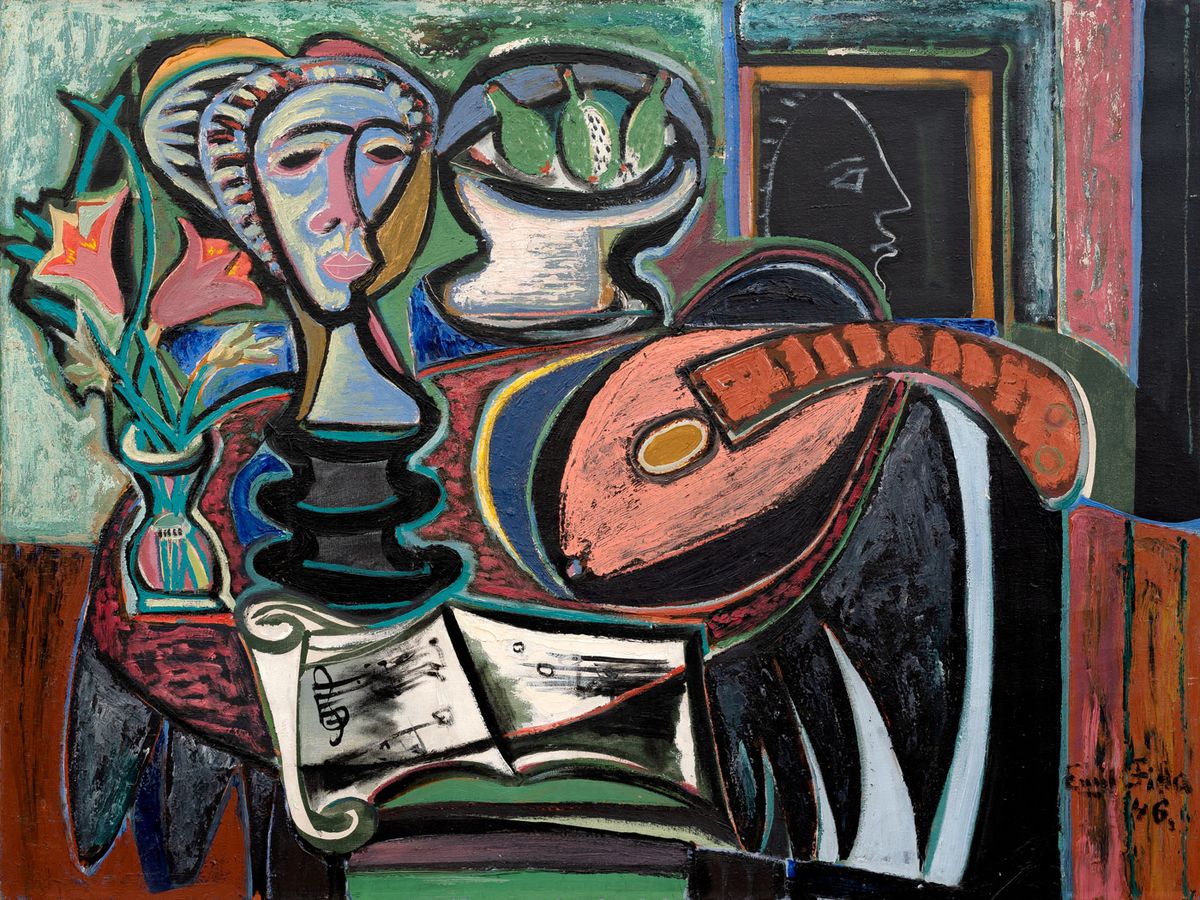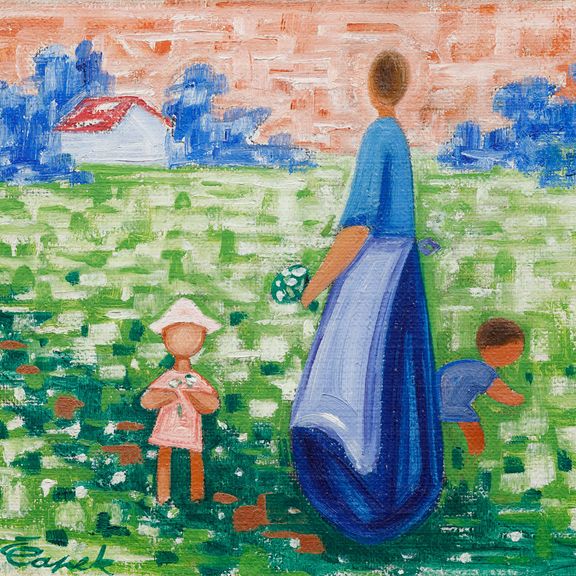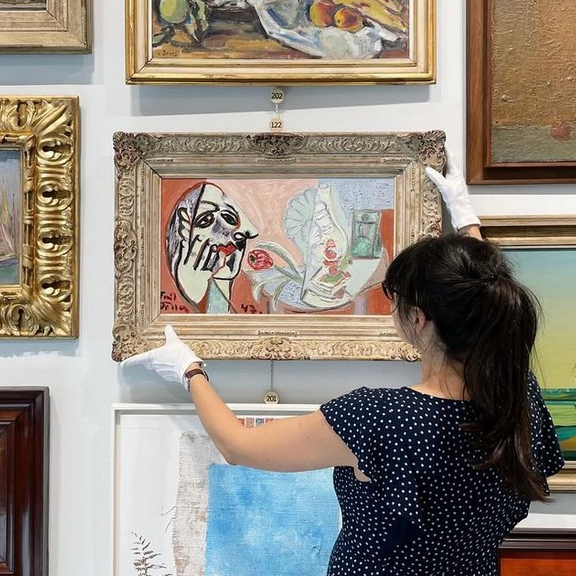
oil on canvas
1946
bottom right
97 × 130 cm
frame
Starting price: 6,500,000 CZK Final price: 12,000,000 CZK
Auction 84th, Lot 184 This absolutely unique and expressively extremely strong large-format work introduces us to Emil Filla as an artist with a deep intellect and talent for painting, constantly researching the issue of still lifes as an artistic discipline providing endless possibilities of execution and approach. Filla's experience in Paris only intensified his fascination with cubism and the study of the works of Picasso and Braque. Nevertheless, his own conception of cubism far exceeds the possibilities of the French style. The strength of his personality and his artistic prowess allowed him to further develop the possibilities of playing with textures and forms in composition. The Still life with a Mandolin comes from Filla's significant post-war period, in which, after a frightening war experience, his renewed joy for life and painting can be felt. The painting is filled with the certainty of many years of painting experience, and Filla's ability to synthesize lyrical cubism, figuration, and the effects of surrealist deformations has also fundamentally matured. The large format allowed the artist to fully develop his sense of the seriousness of the established genre along with folk vivacity. The author did not hesitate to work with established motifs – as in other still lifes he placed next to each other a bowl of pears, a vase of flowers, a score, a mandolin, but also a primitive-looking statue of a woman's head, which takes us back to the turn of the century and fascination with non-European art. In this picture Filla works with colour in a peculiar way. On the one hand, he introduces us to a constrained interior created with darker colours, but on the other hand, he also uses light colour combinations, which give the canvas a lightness and colouristic liveliness typical for the artist during this period. The energy of the lines and the expressiveness of the colours show that Filla, instead of following the current trends, created an expressively noble composition filled with spiritual intensity as well as fragility and intimacy. The value of the work is increased by its origin from an important foreign collection. The canvas was presented in Mánes at the exhibition of Filla's post-war works (Work from 1946-1947, Prague 1947, cat. no. 42). A photograph from the exhibition, where the painting is captured, is reproduced in black and white in the author's monograph (V. Lahoda, Emil Filla, reproduction 574, p. 526). The authenticity of the work was verified by the Filla Foundation and the painting will be listed in the list of works prepared by prof. V. Lahoda, CSc. The painting originally comes from the collection of Dr. J. Borovička. Assesed during consultations by prof. J. Zemina and PhDr. R. Michalová, Ph.D. From the attached expertise by PhDr. K. Srp: "[...] This still life is characterized by unprecedented complexity, it can undoubtedly be described as one of the most important paintings which appeared from Filla's immediate post-war work. In particular, I would like to draw attention to the appearance of blue colour, which has received extraordinary importance here as a contour element separating objects and individual fields, as well as surrounding individual objects. [...] “).







